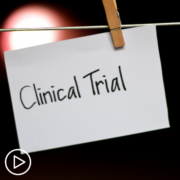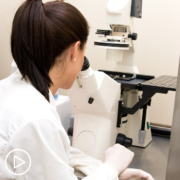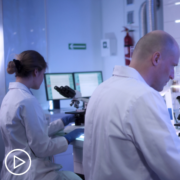How Molecular Markers Affect MPN Treatment | Advances in Research
How Molecular Markers Affect MPN Treatment | Advances in Research from Patient Empowerment Network on Vimeo.
Are there new molecular markers being discovered that could affect myeloproliferative neoplasm (MPN) care? Dr. Lucia Masarova explains common MPN driver mutations and what researchers are learning about recently discovered molecular markers, such as ASXL1.
Dr. Lucia Masarova is an MPN Specialist and Assistant Professor in the Department of Leukemia at The University of Texas MD Anderson Cancer Center. Learn more about Dr. Masarova.
Related Programs:

|

|

Expert Perspective | Disease Modification in Polycythemia Vera |
Transcript:
Katherine Banwell:
Dr. Masarova, molecular testing is important for people diagnosed with MPNs and may help provide insight into effective treatment approaches. What are some new areas of research related to molecular markers?
Dr. Lucia Masarova:
Molecular markers are very relevant in our designs or thinking about myeloproliferative neoplasms. Not only treatments, but also the disease qualification or prognostication wherever since the discovery of the so-called driver mutations, which are the mutations responsible for the overproduction of the blood counts and disease pathogenesis.
Among them we have the most common, JAK2 mutation, then also calreticulin, MPL, or in some instances we don’t even understand and call it triple-negative.
There we have learned, over the years, that the amount of the expression, or allele burden, does correlate with the disease behavior outcome. And then our ability to reverse that. So, a chief decrease of the burden is also relevant to the outcome of the patients. So, developing therapies or even putting these as an endpoint for clinical trials is important for our decision-making and moving towards eradication of the disease.
Then there are additional molecular changes, which include non-drivers, which are additional mutations that we have learned and even implemented in the latest prognostic models, some of them are very unfavorable, such as ASXL1, Ezh2, IDH mutations, certain splicing factors.
And those play additional roles, a lot of it we still do not understand, in how the disease is going to ultimately behave. What is their interplay, and how we can interfere with that?
So, learning about the impact of these mutations and the drivers and the other effects that cause the disease evolution will probably become the landmark of this decade and in facing myeloproliferative neoplasms.
And I’m hoping we will develop medications, or we will be able to focus our efforts and our decision-making based on molecular definition, as it’s currently very broadly seen across all cancers. We call it precision medicine where we really define, “How does this look like,” not how we box it in based on morphology. What is it driving? What is it not responding? And what can we do to improve that?
So, I totally see here a big potent and powerful tool to allow us to make the most individualized and customized decisions for our patients to offer them the best outcomes.


























